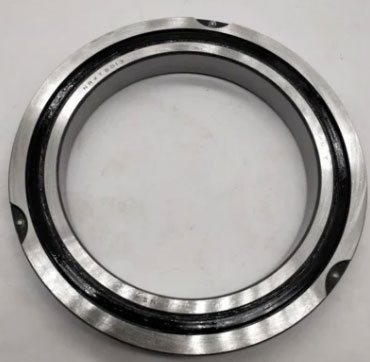Home / News / Understanding Crossed Roller Bearings: The High-Precision Solution for Mechanical Systems
Understanding Crossed Roller Bearings: The High-Precision Solution for Mechanical Systems
Introduction: The Role of Bearings in Mechanical Systems
Bearings are essential components in mechanical systems, providing support for rotating or oscillating components such as shafts, wheels, or gears. Their primary function is to reduce friction and ensure smooth and efficient movement, extending the lifespan of the system and improving its performance. In high-precision applications such as aerospace, medical, or robotics, the choice of the right bearing can make a significant difference in the system's accuracy, stability, and reliability. One type of bearing that has gained popularity in recent years is the crossed roller bearing, renowned for its high precision and durability. In this article, we will provide an overview of crossed roller bearings, their advantages, applications, and maintenance.
Crossed Roller Bearings: What Are They?
Crossed roller bearings, also known as crossed cylindrical roller bearings or crossed roller slides, are a type of rolling-element bearing designed for applications that require high precision and rigidity. Unlike other bearings that use balls or rollers arranged in a circular pattern, crossed roller bearings have rollers arranged in a cross shape, with each roller crossing over the adjacent roller at a 90-degree angle. This design allows the rollers to bear loads in all directions and provides high radial, axial, and moment load capacities.
Advantages of Crossed Roller Bearings
The unique design of crossed roller bearings offers several advantages over other types of bearings. One of the main advantages is their high precision and accuracy, making them ideal for applications that require precise positioning, such as robotics, machine tools, and measurement equipment. Crossed roller bearings also have a low friction coefficient, resulting in smooth and efficient movement, reducing wear and extending the lifespan of the system.
Another advantage of crossed roller bearings is their high rigidity, which provides excellent resistance to deformation and deflection under load. This feature is particularly beneficial in applications that require high stiffness, such as semiconductor manufacturing, medical devices, and aerospace equipment. Crossed roller bearings are also relatively compact and lightweight, making them easy to integrate into complex systems with limited space.

Applications of Crossed Roller Bearings
Crossed roller bearings have a wide range of applications in various industries, thanks to their high precision, rigidity, and low friction. Some of the most common applications include:
Robotics: Crossed roller bearings are widely used in robotics for joint and arm actuators, enabling precise positioning and smooth movement.
Machine tools: Crossed roller bearings are commonly used in machine tools such as lathes, milling machines, and grinders, providing high precision and rigidity for cutting and shaping operations.
Medical devices: Crossed roller bearings are used in medical devices such as X-ray machines, CT scanners, and MRI machines, providing precise movement and stability during imaging procedures.
Aerospace equipment: Crossed roller bearings are used in aerospace equipment such as satellites, telescopes, and rockets, providing high precision and rigidity for space exploration and research.
Maintaining and Installing Crossed Roller Bearings
Proper maintenance and installation are essential for ensuring the optimal performance and lifespan of crossed roller bearings. Before installing the bearings, it is crucial to ensure that the mating surfaces are clean, flat, and free of burrs or debris. The bearings should also be lubricated properly, using the recommended lubricant and the appropriate amount.
Regular maintenance is also necessary to keep the bearings in good condition, including cleaning, inspection, and re-lubrication. The frequency of maintenance depends on the operating conditions, load, speed, and environment. It is recommended to follow the manufacturer's instructions for maintenance and to replace the bearings if there are signs of wear, damage, or abnormal noise or vibration.
When installing or replacing crossed roller bearings, it is essential to handle them with care and to avoid dropping or striking them. The bearings should also be mounted with the correct orientation and preload, according to the manufacturer's specifications. Proper installation and preload can ensure the optimal performance and reduce the risk of premature failure or damage.
Conclusion: The Benefits of Crossed Roller Bearings
In conclusion, crossed roller bearings are an excellent choice for high-precision applications that require accuracy, rigidity, and low friction. Their unique design and features provide several advantages over other types of bearings, making them ideal for industries such as robotics, aerospace, medical, and machine tools. Proper maintenance and installation are crucial for ensuring the optimal performance and lifespan of crossed roller bearings, and it is recommended to follow the manufacturer's instructions and guidelines. With their high precision and reliability, crossed roller bearings are a valuable solution for mechanical systems that require the utmost accuracy and stability.
- Previous: HXU Crossed Roller Bearings: The High Precision Solution for Industrial Applications
- Next: Understanding Crossed Tapered Roller Bearings: The High-Performance Solution for Heavy-Duty Applicat













